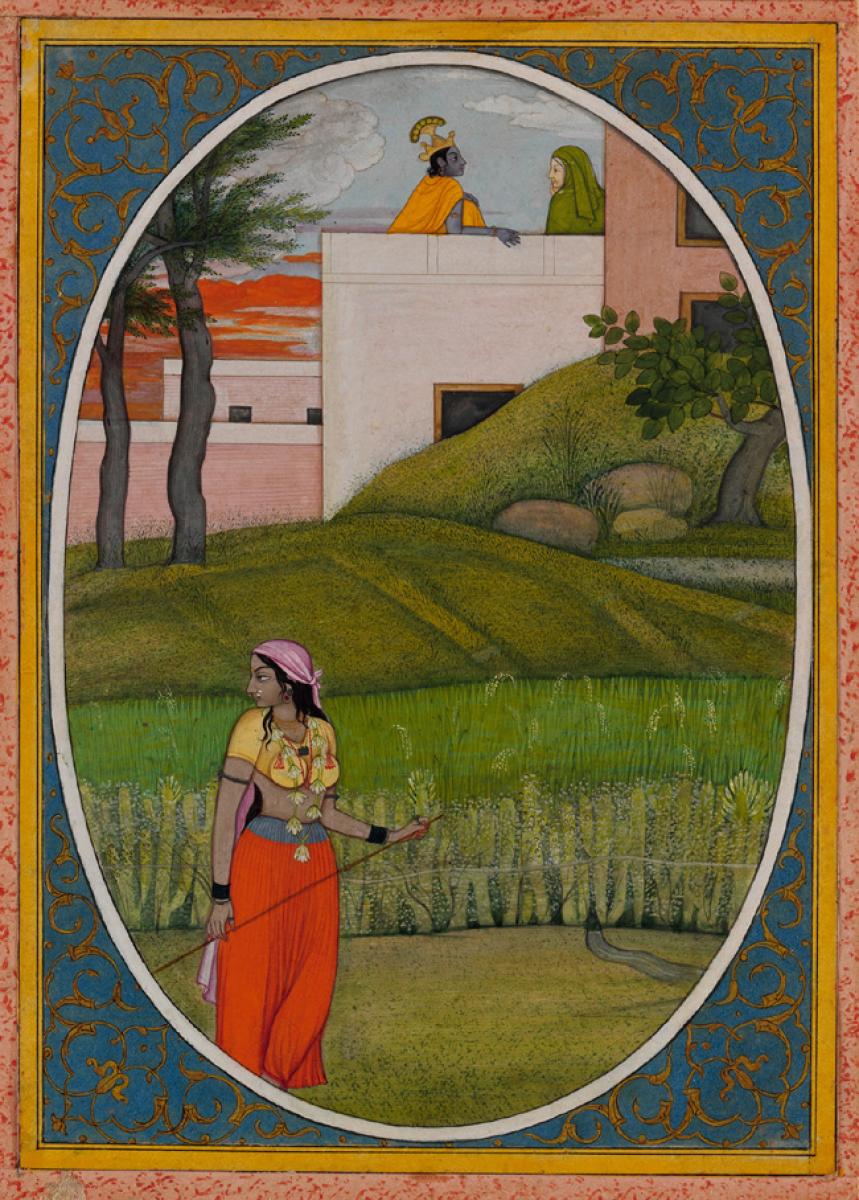Live
- ‘Art from Garbage’ exhibition showcases civic workers’ creativity
- Must-Watch Streaming Originals for 2024: Top Picks
- Tumakuru implements emergency response system for women’s safety
- Sujeet Kumar elected to RS unopposed
- ACTO, two others held for Rs 4 cr fraud
- Adopt tech-based probe process: DGP Khurania
- Bhubaneswar: Four fraudsters held for operating fake gaming app
- Majhi asks new recruits to shun corruption
- Modi’s bold decision: Bommai hails PM
- Devotees experience normal rush at Tirumala amidst long queues
Just In
Summer Exhibition at The Met to Feature Collection of Transcendent Paintings from Northern India's Rajput Courts


Compelling episodes from Hindu epic and poetic literature of the Indian subcontinent dominate the nearly 100 masterful paintings—most a 2015 promised gift by Steven M. Kossak from his family\'s Kronos Collections—that will be shown at The Metropolitan Museum of Art beginning June 14.
Compelling episodes from Hindu epic and poetic literature of the Indian subcontinent dominate the nearly 100 masterful paintings—most a 2015 promised gift by Steven M. Kossak from his family's Kronos Collections—that will be shown at The Metropolitan Museum of Art beginning June 14. Created mainly between the 16th and the early 19th century for the royal courts of Rajasthan and the Punjab Hills in northern India, the works on view in the exhibition Divine Pleasures: Painting from India's Rajput Courts—The Kronos Collections are meant to move the soul and delight the eye. Suffused with the powerful imagery of the myths of the past, Indian painting expressed a new way of seeking the divine through bakhti, or personal devotion. The collection was assembled over nearly four decades by Mr. Kossak, formerly a curator in The Met's Department of Asian Art.
"We are delighted to present this exhibition of Steve Kossak's generous promised gift," said Thomas P. Campbell, Director and CEO of The Met. "These distinguished paintings constitute one of the premier collections of this material in private hands, and their eventual addition to The Met collection will transform the Museum's holdings of Rajput painting. It is a significant addition to Steve's legacy at The Met after serving for two decades as a curator."
Exhibition Overview
The exhibition will be organized into three major sections—Early Rajput and Rajasthan, early Pahari (Punjab Hills), and later Pahari. Within each room, the paintings will be shown in relation to the literary traditions of Indian Hinduism. Rajput court painting was mainly intended for royal delectation, to amplify through the artistic fantasy manifest in the pictures, well-known religious, quasi-religious, and secular texts and subjects. The power and magic of the images transcends the subjects they portray.
Under the patronage of their Rajput rulers, many of the principalities of north India developed and nurtured a distinctive painting style. This galaxy of stylistic expression will be amply demonstrated in the exhibition through compelling examples of the Early Rajput Style; the later schools of Bikaner, Bundi, Kishangarh, Kota, and Mewar; as well as many of the small courts of the Punjab Hills: Bahu, Bahsoli, Bislalpur, Chamba, Guler, Kangra, Mandi, Mankot, and Nurpur.
Painted on paper in opaque watercolor and ink, they are often heightened with gold and silver. Whites are often raised to simulate pearls and reflective beetle-wing casings stand in for emeralds. Many of the paintings have never before been exhibited publicly.
The exhibition was organized by Navina Haidar, Curator, and Courtney Stewart, Senior Research Assistant, of The Met's Department of Islamic Art. Exhibition design is by Daniel Kershaw, Exhibition Design Manager; graphics are by Constance Norkin, Graphic Design Manager; and lighting is by Clint Ross Coller and Richard Lichte, Lighting Design Managers, all of the Museum's Design Department.

© 2024 Hyderabad Media House Limited/The Hans India. All rights reserved. Powered by hocalwire.com






